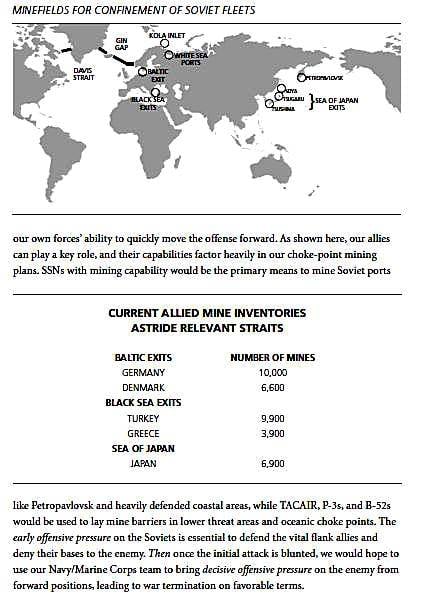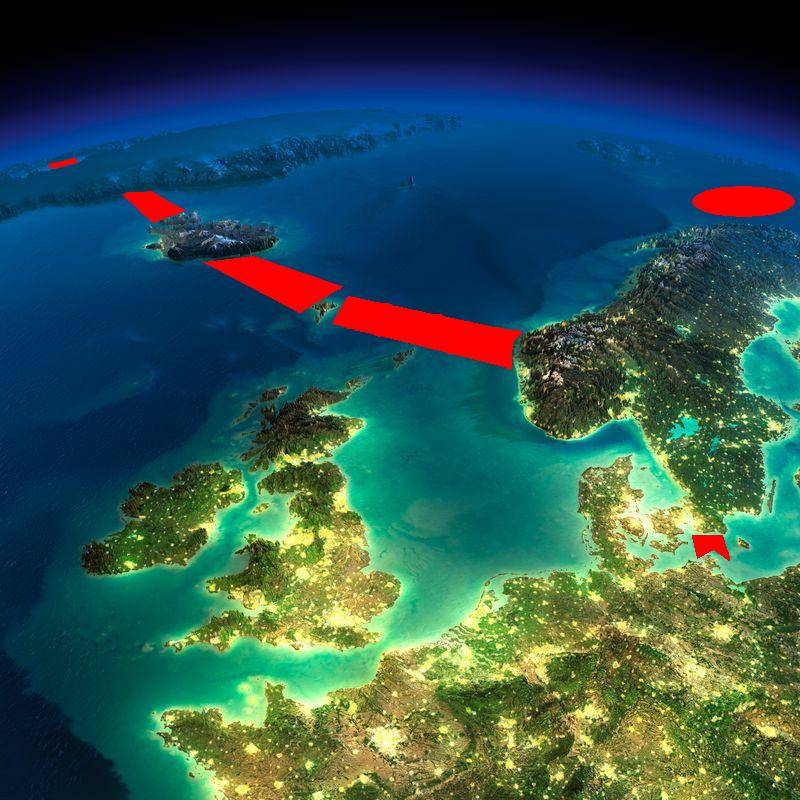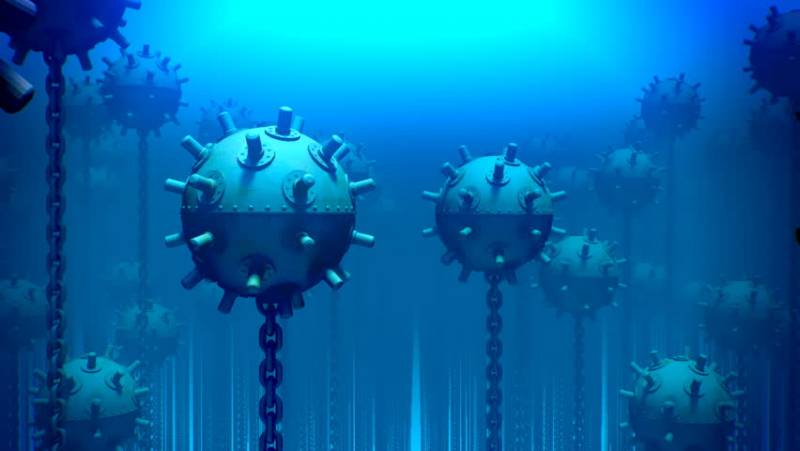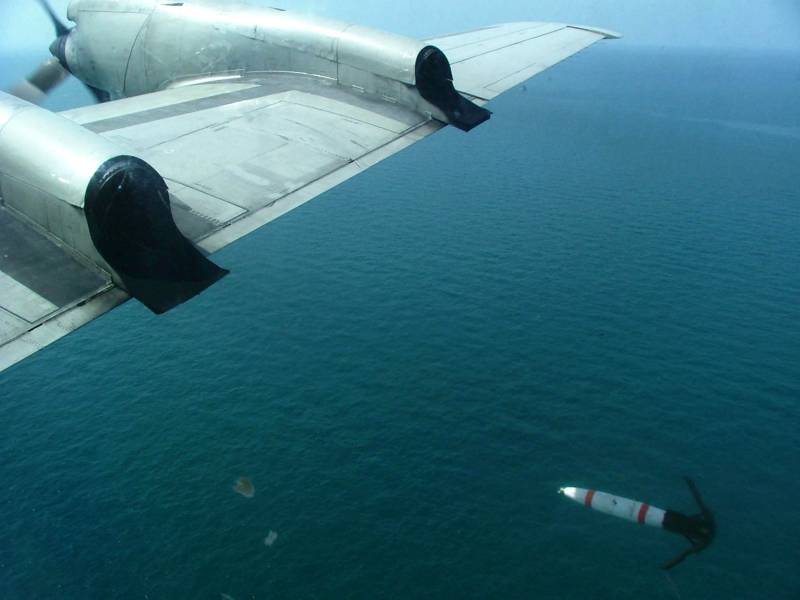Death from nowhere. About the mine war on the sea. Part of 1
This certainly applies to the naval forces.
There is, however, one historical a lesson that is completely ignored in almost all countries to which this lesson was once taught, and those who taught it are also ignored. We are talking about sea mines and the destructive impact that they can have on any of the fleets of the world, being correctly and massively applied.
This is surprising and somewhat frightening: not a single fleet is able to adequately assess the threat that has been studied many times, and by some who have been used weapons. Let us leave the phenomenon of mass blindness to psychologists, in the end, when assessing naval preparations of various countries, it is important for us that there is a “cognitive distortion” among decision makers, and where it came from to better understand psychologists. It is far more interesting to evaluate the real potential of mine weapons, especially since sometimes professionals, whose duties will include their combat use, underestimate it.
A bit of history.
The most widespread today conflict, in which sea mines were used, is the Second World War. However, although the results of the use of mine weapons are well documented, they are not properly studied. Mine warfare issues are “divided” between different types of Armed Forces, which, for the most part, see in mine settings as something secondary to the use of other types of weapons. This is a common moment in the Armed Forces of various countries, including Russia.
How was it really?
We remember how the Gulf of Finland was blocked by German mines, and how the Baltic Fleet was locked up in its harbors for a long time, we remember how the submarines died as they tried to break through the mines and nets exposed by the enemy. We remember how many ships died during the evacuation of Tallinn and Hanko. It would seem that everything is obvious, but in Russia mine warfare is “not in high esteem,” just like mine support. About this a little later, but for now let's see what Western historical experience looks like.
In 1996, the Australian Air Force Center, a military research organization under the Australian Air Force, issued the so-called Document 45. Air War and Naval Operations. The authorship document of Doctor of Historical Sciences Richard Hallion is an essay on a forty-one page, which summarizes the combat experience of the basic aviation Allies in the fight against the naval forces of their opponents, both during WWII and after, some sort of squeeze from the actions of the “coast” against “fleet". The essay is a very detailed and high-quality study, with a detailed bibliography, and for the Australian Air Force is also, in a sense, a guide to action. It is freely available..
That, for example, is indicated in it with regard to the effectiveness of mine settings from the air:
Approximate translation:
Thus, the experience of the British in Europe suggests that mines - the most effective weapon against ships, more effective than bombs, torpedoes, shelling and airborne cannons or anything else.
The author cites an example unknown to us: Kriegsmarine was forced to use 40% personnel for demining! This could not but have an effect on the outcome of the war at sea. What is interesting, the author, citing statistics on the German tonnage destroyed by our armed forces, assigns mines 25%. This data is worth checking, of course, but the order of numbers looks realistic.
The chapter "Aerial Mining Bottles Up the Home Islands" (approximately - "Air mining locks the Japanese islands") would deserve to bring it in full, but the format of the article does not provide for this, therefore, we will give a squeeze.
Since the end of 1944, the Allies have conducted a campaign to mine the waters important for the supply of the Japanese islands, including the coastal ones. It was exposed from the air 21389 mines, of which 57% bomber exposed B-29 Superfortress.
According to the author, the result of this short mining campaign was the sinking of 484 ships, the destruction to the impossibility of restoring even 138 and 338 were seriously damaged. Total tonnage totaled 2 027 516 tons, including 1 028 563 tons lost completely and irrevocably. This is, in general, about 10,5 percent of all that Japan lost to the sea during the entire war, according to JANAC - a special commission for assessing the results of the war. But the mines campaign lasted only a few months!
And if the Americans immediately, from the 1941 year would have resorted to such operations? If they used seaplanes for night raids with mines on the coastal waters, which, relying on ships-tenders, could well “get” Japan? What if a mine campaign would take a couple of years? How long would Japan hold, given that the ten-month Allied mining raids completely paralyzed Japanese shipping? So much so that 86% of all ship repair facilities were idle, blocked by mines from delivering damaged ships to them?
At the same time, we all need to understand that the mines at that time were very much simpler and cheaper than torpedoes. In fact, it was a question of a “cheap victory” - if the Americans were more smart with mining, the war could have ended earlier. The Japanese would just die.
Fast forward to a somewhat later historical period - the beginning of the 80-s, at the "peak" of the Cold War.
When planning a war at sea with the USSR, the Americans, remembering (then) their experience with Japan, planned to carry out high-intensity offensive mining by the forces of tactical aviation, B-52 Stratofortress bombers, and P-3 Orion patrol aircraft, as well as submarines. The latter, taking advantage of secrecy, were to mine the Soviet ports on the White Sea and Kamchatka, partly in the Barents Sea. Aviation would take over remote areas from the Soviet shores.
On this page from the collection of the US Maritime Strategy in 80-x, released by the Naval College in Newport, you can see where the US planned to carry out mining, and how many mines the US allies had.

It is not difficult to see that it was huge. And we must understand that these were not at all such mines that blocked Japan. For such a mine as CAPTOR, the affected area is 1000 meters - it is in this “field” that a mine can detect a submarine and release an anti-submarine torpedo from a tethered container.
In fact, realize this plan, mines for a time would be a factor of planetary scale.

In 1984, the United States CIA unleashed a terrorist war against Nicaraguaand, in addition to the actions of the Contras on the ground, the Americans carried out the mining of harbors and coastal waters, which led to the undermining of many civilian courts and would have caused great damage to the Nicaraguan economy, if not for the help of the USSR. At the same time, the Americans used artisanal mines, installed from the Contra boats, and this operation cost them absolutely ridiculous money. Investments were scanty, efficiency - huge.
What else does historical experience tell us?
For example the fact that the duration of the trawling can be very long. So, the Soviet Navy in 1974 spent 6 thousands of hours of continuous trawling on demining the Gulf of Suez XNUMX.
The US and NATO cleared the Suez Canal from the 14 mines for months. During the clearance by the Chinese of Haiphong harbor in 1972, a squad of 16 minesweepers and support vessels, staffed by the best Chinese experts, spent only three months on breaking through the corridor of their Haiphong in the sea from August 25 to 25 in November. Further, the trawling works continued until mid-January of the 1972 year. And this is despite the fact that the scale of American mining was limited.
The question arises: how would emergency demining be carried out if it were necessary to urgently withdraw a submarine from the harbor, for example? Alas, the answer is no. Those methods, at least.
Still? We also know that during an offensive operation, mining is carried out in advance. This is a very important point - if you ask anyone when the war started in Germany against the USSR, most will say that 22 June 1941, about 3.30 nights, from Luftwaffe air strikes.
And in fact, it began in the late evening of June 21 in the Baltic, with the setting of mines.
Briefly summarize the historical experience.
1. Sea mines have tremendous destructive power, in relative terms, they turned out to be more effective lethal weapons than torpedoes and bombs. Most likely, mines are the most effective anti-vehicle.
2. The main means of setting mines is aviation. The number of ships that exploded on mines exposed from the air exceeds the same number, but on mines from submarines hundreds of times - by two orders of magnitude. This is indicated, for example, by the American data (the same JANAC).
3. Submarines are able to carry out covert and pinpoint mining in the area protected by the enemy, including in its waters.
4. Trawling mines takes a long time, from months to years. There is no way to speed it up. For now at least.
5. When waging an aggressive offensive war, the enemy will resort to "offensive mining" and put mines in advance, before the outbreak of hostilities.
6. Mines are one of the most "economically efficient" types of weapons - their cost is disproportionately small in comparison with the effect they have.
Now fast forward to our day.
Currently, there are thousands of mines in service with developed countries. These are bottom mines and torpedo mines, which have a container with a homing torpedo instead of an exploding warhead, and mines with a torpedo rocket, and self-propelled mines released from the submarine torpedo tube and going to the place of installation on their own.
Mines are set from surface ships and boats, submarines and aircraft.
An example of a modern aviation mine is the American system. "Quickstreak" - satellite-guided planning mines. Being dropped from a carrier - a combat aircraft, these mines fly several tens of kilometers using folding wings and a steering system similar to those that have JDAM bombs, and then fall into the water at a given point. This method allows, firstly, to protect the carrier plane from the air defense fire, and secondly, to put mines exactly “according to the scheme” - being controlled, they will fall on the water, precisely repeating the desired “map” of the minefield with their contact points.
At the same time, the minesweeper passes over the trawling “in the old way”, and then it “hooks” (or physically - by cutting off a minrep, or by its physical fields, acoustic or electromagnetic), one of the trawls submerged in water cannot be mined. Mina is likely to simply explode under the minesweeper, destroying it, despite the measures taken to reduce its own physical fields (non-metallic hull, demagnetized engine, reduced noise, etc.). The same will happen when divers attempt to clear mines manually from under the water - the mine will react to this. As an option, some mine defender may react to this - also a mine, but intended to prevent the clearance of a “normal” mine.
Today, mines are fought as follows: the minesweeper “scans” the underwater environment and the bottom with the help of GUS. When a suspicious object is detected under water, an unmanned underwater vehicle, controlled via an optical fiber cable from a minesweeper, is brought to it. Having recognized the mine, the crew of the minesweeper directs another apparatus to it - more simple. This is a mine destroyer, an apparatus that undermines a mine and dies. I must say that they are very much worth it.
Ships that have such capabilities plus the “traditional” mine sweeps are now called minesweepers - mine seekers - THIS.
An alternative option is to locate search systems on a ship that is not a minesweeper at all.
A modern trend is the use of another “link” in mine action - an unmanned boat (BEC). Such a remote-controlled boat equipped with HAS and controlled from a minesweeper, “takes risks” and helps to remove people from the danger zone.
The process of searching and destroying modern mines is most clearly shown here in this video:
So, the paradox of modernity is that all this is very, very expensive. There is not a single country in the world that could afford trawling forces adequate to a mine threat from a probable enemy.
From the Russian Navy, unfortunately, everything is clear. If we assume that the mine complex “Mayovka” and GAS “Livadia” on minesweeper-seeker of the project 02668 "Vice-Admiral Zakharyin" are not in repair, but are on the ship and are functioning, and the crew is trained to use them, then we can safely say that Russia has one minesweeper.
Not quite modern, and without BEC, but at least able to cope with the tasks of finding mines.
And if, as now, with part of the equipment under repair, then it turns out that we have zero modern and efficient minesweepers. The ships of the 12700 project, which began to enter the fleet recently, unfortunately, do not justify themselves - too many defects and their anti-mine complex, and indeed the design was unsuccessful. Yes, and diesel for them PJSC "Star" can not produce in the right quantity. At the same time, they will continue to build them anyway, our “saving face” has long been more important than combat effectiveness.
However, catastrophic failures on level ground have long been a normal phenomenon for the Russian Navy, so we will not be surprised.
However, in other naval forces things are no better - there is simply no country in the world with adequate trawling forces. There is not a single country where there would be at least twenty modern minesweepers. Moreover, there is not a single country where we would seriously ask ourselves the question: “and what will we do if there are not tens, but thousands of mines on the way”? There is not a single country where at least someone would calculate the economics of a mine war and came to the logical conclusion that it would not be possible to make the right amount of disposable destroyers. Modern minesweepers do not carry a dozen destroyers - these devices are too expensive.
Everyone is ready to lay mines and have their reserves, but no one is ready to deal with them later. Currently, all mine action work is going around the BEC-NPA ligament search for mine-killers. Almost no one thinks about how to destroy minefields QUICKLY or pass them quickly. Nearly.
Продолжение следует ...


Information